
Victoria Adams was described as jovial and blue eyed while at St. Annes Parish


PELICAN PUBLISHING COMPANY
Gretna 2013
Copyright 2012, 2013
By Barry Ernest
All rights reserved
First Pelican edition, 2013
The word Pelican and the depiction of a pelican are
trademarks of Pelican Publishing Company, Inc., and are
registered in the U.S. Patent and Trademark Office.
Library of Congress Cataloging-in-Publication Data
Ernest, Barry.
The girl on the stairs : the search for a missing witness to the JFK assassination / Barry Ernest ; foreword by David S. Lifton.
pages cm
Includes bibliographical references and index.
ISBN 978-1-4556-1783-8 (hardcover : alkaline paper) ISBN 978-1-4556-1793-7 (e-book) 1. Kennedy, John F. (John Fitzgerald), 1917-1963Assassination. 2. Adams, Victoria Elizabeth. 3. WitnessesTexasDallasBiography. 4. Missing personsTexasDallasBiography. 5. Official secretsUnited StatesCase studies. I. Title.
E842.9.E76 2013
973.922092dc23
2012047607

Printed in the United States of America
Published by Pelican Publishing Company, Inc.
1000 Burmaster Street, Gretna, Louisiana 70053
For my parents, who always encouraged me to seek the truth.
And for Patty, Jason, and Lisa, who put up with me as I tried.
The truth which makes men free is for the most part the truth which men prefer not to hear.
Herbert Sebastian Agar
The great enemy of the truth is very often not the liedeliberate, contrived, and dishonest, but the mythpersistent, persuasive, and unrealistic. Belief in myths allows the comfort of opinion without the discomfort of thought.
John F. Kennedy
Yale University Commencement Address
June 11, 1962
Contents
Foreword
Anyone who has ever become interested in the John F. Kennedy assassination probably starts with the idea that pursuing the truth is going to be relatively easy and then, in stages, learns that finding the truth and answers is more complicated than he or she ever really thought. Indeed, the Kennedy assassination is akin to a maze, and as with any maze, not all paths lead to the centerwhatever the center really is. I am one who journeyed down that path, and Barry Ernest, whom I have known for decades, is another.
In my case, the inciting incidentto use screenwriter lingooccurred when, as a close student of the Warren Commission Report, I was shown evidence that President Kennedys head appeared to snap violently backward in response to the fatal shot, something unmentioned in the Report but obvious on the Zapruder film. Any U.S. citizen could telephone the U.S. National Archives, make an appointment, and then travel to Washington, D.C. for a private viewing of the motion picture, but of course, only a handful of people did that. Especially because I lived in Los Angeles, pursuing my masters at UCLA, what I examined was the rather poor black-and-white reproductions of 158 frames of the Zapruder film that appeared as Warren Commission Exhibit 885 in volume 18 of the Warren Commissions 26 volumes.
Ray Marcus, one of the first generation JFK researchers, lived in West Los Angeles, and it was he who showed me those, in March 1965. Having recently graduated from Cornells School of Engineering Physics (class of 62), and having had some six years of physics courses by that point, I was astounded. Until then, I believed the Warren Report, more or less. But after that demonstration, I wrote in Best Evidence, For me, confronting the head-snap evidence was an almost revolutionary experience. For the first time, I looked at an official government pronouncement and said: No, I dont believe that. In fact, my immediate response was, Thats impossible! Oswald was supposedly firing from behind. So he certainly couldnt have fired that shoti.e., the fatal shot. Then came some elementary political questions. How could the attorneys on the Warren Commissionmany of them young men who had gone to the best colleges and law schools and had access to this filmhave watched it and believed that Lee Harvey Oswald was the assassin? Or, being more specific: how could they believe that he had fired the fatal shot? Indeed, how could anyone believe that Oswald was President Kennedys assassin, if the film of the assassination showed he was struck fatally from the front? Moreover, if there was some explanation, why wasnt the matter investigated at the time of the Warren Commission inquiry? Why wasnt there a section in the Warren Report discussing the backward snap of President Kennedys head? Was it possible the legal staff of the Warren Commission hadnt noticed?
In December 1965, still believing that I was privy to something that, for some reason, the Warren Commission had not noticed, I had the opportunity to pose this question directly to one of the most important members of the Commission: former CIA director Allen Dulles.
During World War II, Dulles had joined the Office of Strategic Services and served as the OSS chief in Bern, Switzerland. He negotiated an early surrender of German forces in Italy. All of this made it into the American press and, says the official biography of Allen Dulles on the CIA Web site, Dulles became famous in America as a spymaster and wartime cloak-and-dagger hero.
But Dulles was not that much of a hero to President Kennedy. He was one of those who sold Kennedy on the idea of the Bay of Pigs invasion as a way of overthrowing Castro. Kennedy fired Allen Dulles after the Bay of Pigs (mid-April 1961), and his next big venture into public service was when President Johnson appointed him to the Warren Commission (November 29, 1963). A year after the Warren Report was released (in September 1964), Dulles apparently was seeking to earn some extra money and went on the lecture circuit. That resulted in Dulles appearing at UCLA in December 1965 and being paid a princely sum for making a few speeches, and then meeting with students in an informal, coffee-klatch atmosphere.
So thats how I came to meet him. In fact, I had a rather heated confrontation with him, one that lasted some fifteen minutes (at least) and took place in front of about fifty UCLA students on December 7, 1965, at the Sierra Lounge, the main lounge of Hedrick Hall, one of the major UCLA dormitories. Allen Dulles was then seventy-two; I was twenty-six and dressed in my best suit, looking very establishment. But what I had to say was not establishment at all. I had arranged with the student organizer to meet with Dulles in front of the assembled audience when he made this scheduled appearance at Hedrick Hall, and thats exactly what I did.
I was seated on a sofa with Dulles in the spacious lounge, and it began mildly enough. When I noted that the Warren Report had said there was no conspiracy, he corrected me. Wasnt it, asked Dulles, punctuating the air with his finger as he spoke, we have found no evidence of conspiracy? I proceeded to bring up the eyewitness and earwitness evidence that one or more shots had been fired from the grassy knoll. Our debate then quickly escalated. When I brought up the fact that a number of witnesses reported smoke rising from behind some bushes on the grassy knoll, he chortled. Do you think someone was smoking back there?
Next page

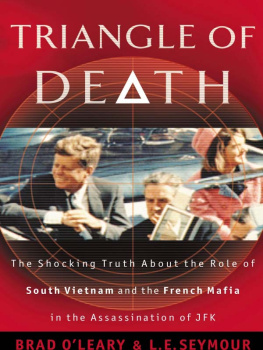
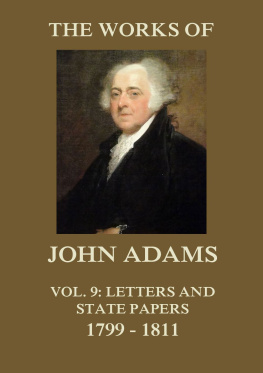
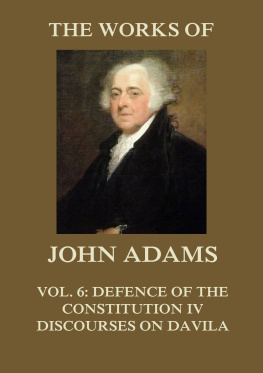
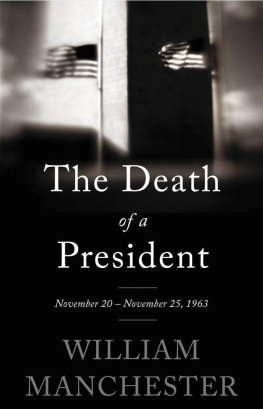
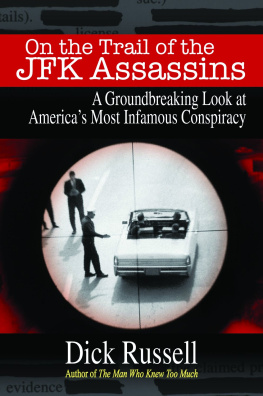
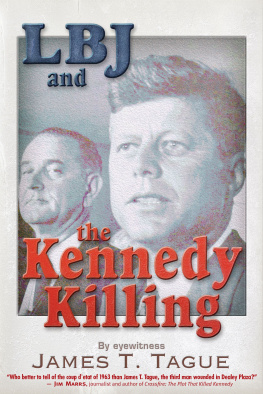
![Ernest Adams [Ernest Adams] - Fundamentals of Adventure Game Design](/uploads/posts/book/119415/thumbs/ernest-adams-ernest-adams-fundamentals-of.jpg)





